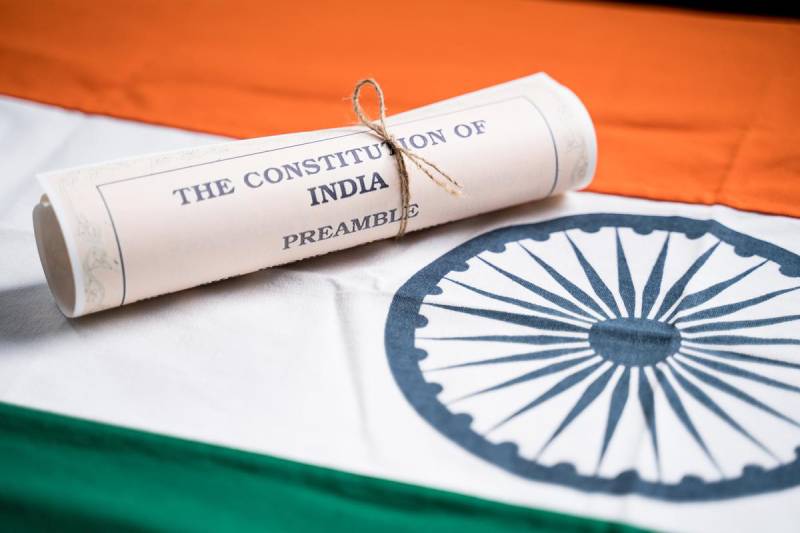This year, as we celebrate the India’s Republic Day 2025 on January 26, we honour not just the creation of our Republic, but also the core of democracy as enshrined in the Indian Constitution. This day represents the fruition of a common dream, one realized through the tireless efforts of leaders, revolutionaries, and visionaries who paved the way for our country’s freedom. Our Constitution is more than just a document; it provides the foundation for the rights we enjoy, the freedoms we adore, and the democratic values we preserves.
It is the world’s longest-written Constitution, representing India’s diversity and unity. Its formation was no small task, thanks to the efforts of leaders such as Subhas Chandra Bose, Bhagat Singh, Sardar Vallabhbhai Patel, Mahatma Gandhi, and the intellectual insight of the chief architect, Dr BR Ambedkar.
The day is interesting in Indian history since it marks the adoption of India’s constitution and the transition from a British dominion to a sovereign republic.
Furthermore, it honors the Constitution’s ideas and the democratic framework it founded, highlighting values such as justice, equality, and fraternity.
The implementation of India’s Constituent Assembly-drafted Constitution on January 26, 1950, represented an iconic moments in the country’s history. It has been revised 106 times so far, showing the dynamism and adaptability essential to govern a varied and large democracy like India. These adjustments not only address pressing challenges, but also reflect the social, political, and economic changes that define our journey.
India has the world’s most changed national constitution, demonstrating flexibility and resilience.
Here’s a closer look at some of the most important amendments that have profoundly impacted our nation:
Big Constitutional Amendments-
7th Amendment (1956): Reorganization of States: This amendment reorganized India’s states along linguistic lines, replacing the previous classification of Class A, B, C, and D states. It established Union Territories and paved the way for better governance and cultural representation, meeting the needs of linguistic statehood.
The 24th Amendment (1971): Increases parliamentary authority: This amendment authorized Parliament to change fundamental rights and required the President’s agreement to constitutional amendment proposals. It originated as a result of judicial challenges, particularly in the landmark Kesavananda Bharati case.
The 39th Amendment (1975): Protects top officials’ elections: It was enacted during the Emergency to protect Prime Minister and other key officials’ elections from judicial examination, which had a direct impact on Indira Gandhi’s contested 1971 election.
42nd Amendment (1976): The ‘Mini Constitution’: Introduced during the Emergency, it added Socialist, Secular, and Integrity to the Preamble, consolidated power, and limited judicial review. Fundamental duties for citizens were also established, indicating a significant constitutional shift.
The 52nd Amendment (1985): Is an anti-defection law: Designed to reduce political instability, this amendment disqualified legislators who defected from their parties, maintaining party discipline and accountability.
The 61st Amendment (1989): Lowers the voting age from 21 to 18 years, allowing millions of young Indians to actively engage in the democratic process.
73rd Amendment (1993): Panchayati Raj: This amendment established grassroots governance by granting constitutional standing to village-level administration, supporting participatory democracy.
The 86th Amendment (2002) provides for the right to education: Making education a fundamental right for children aged 6 to 14, this amendment demonstrated the country’s commitment to universal literacy and childhood development.
The 101st Amendment (2016) introduces GST: The Goods and Services Tax, a significant reform, modernized India’s tax system by replacing various indirect taxes with a single structure.
The 106th Amendment (2023): Women’s Reservation This amendment: which reserved one-third of seats in the Lok Sabha and State Legislative Assemblies for women, was a historic moment in the quest for gender equality in politics.
- World Cup 2026: American Airlines Signs Sponsorship Deal With FIFA - April 17, 2025
- National Exercise Day 2025: How a Daily Walk Can Boost Your Body & Mind - April 17, 2025
- How to Watch the New Series ‘Sherlock & Daughter’ from Anywhere - April 17, 2025



